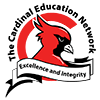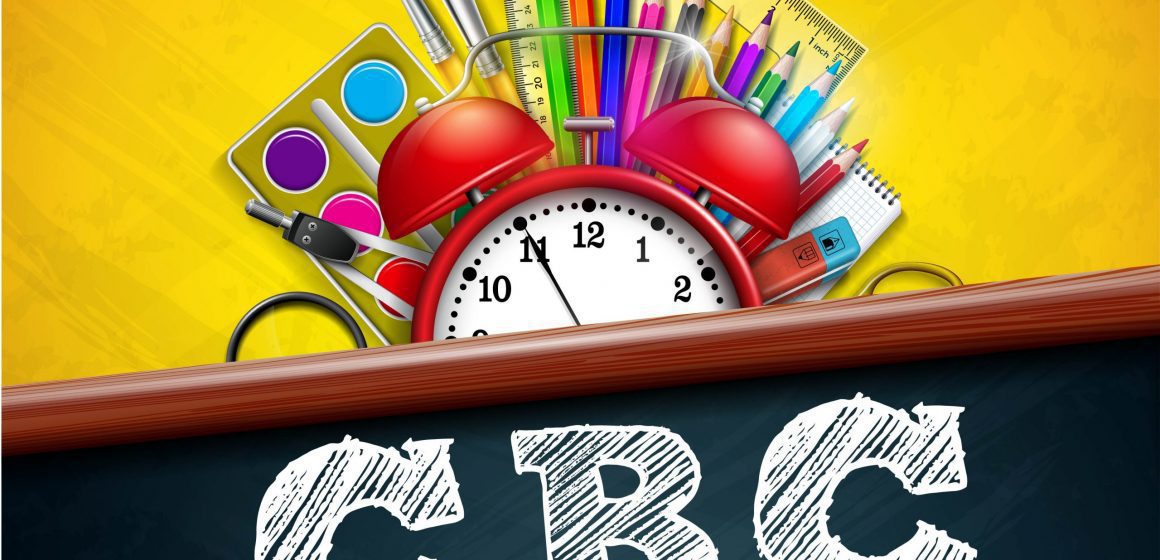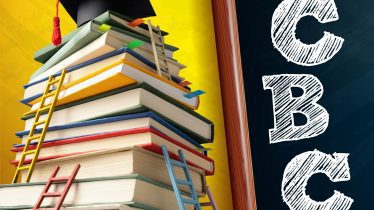Demystifying Competency-Based Curriculum (CBC) – The Kenya Experience
Many graduates today lack the basic competencies required for the present-day labour market. The shift in necessary competencies is accelerated by rapid technological advancements and globalisation. To equip their young citizenry to flourish and compete effectively globally, many progressive countries across the world have elected to transform their basic education curriculum from content-based to competency-based. Even though the concept is generally the same, specific curriculum provisions and approaches to delivery differ from one country to another.
Competency-Based-Curricula (CBC) work on the premise that to prepare adequately for current and future labour markets and life, learners need appropriate exposure to relevant real-life requirements. This calls for the inclusion of cross-cutting ideas, processes, and practical skills in their curriculum from the early stages of education.
In 2017, Kenya jumped on the bandwagon by launching the Competency-Based curriculum to replace the content-based 8-4-4 curriculum which has been in operation since 1985. The government also initiated the gradual phasing-out of the 8-4-4 curriculum with the last class under the 8-4-4 curriculum expected to sit their KCSE national examination in the year 2027.
CBC is a fairly new concept to many people in Kenya, including educationists. Reorientation from content-based education to CBC demands a complete paradigm shift. For the system to succeed, investment in stakeholder awareness efforts is critical to promote their appreciation of the new approach and secure much-needed buy-in and support.
In this blog, we explore some key elements of the Competency-Based Curriculum based on the Kenya experience to support its demystification.
Difference between Competency-based and content-based education
Understanding the difference between competency-based and content-based curricula remains challenging for many. We have endeavoured to demonstrate some of the differences by comparing aspects of the two systems as captured in the table below.
| Content-based curriculum | Competency-based curriculum |
|---|---|
| Its focus is on the coverage and mastery of predetermined syllabi content within defined timelines. | Its focus is on the acquisition of appropriate competencies (knowledge, skills, and behaviour). |
| It is a prescriptive curriculum with limited progression paths at basic levels of education. | It is a flexible curriculum that offers opportunities for practice and specialisation at basic levels of education. |
| It employs a summative assessment approach in gauging learner progress and determining their transition to higher school levels e.g. KCPE, KCSE, and even termly examinations. The examination period is extremely short, usually 3 days at the primary school level and about 3 weeks for secondary school examinations. Transition examinations focus on recollection of content. | It uses both formative and summative assessments in gauging learner progress. Assessment is continuous and is carried out over longer periods. Focus is on what the learner is able to do. When determining transition to higher school levels, the learner’s performance over multiple years of school is considered. |
| The emphasis is on attending and completing the different levels of schooling. It is more of a status factor, with a focus on theoretical know-how. | The emphasis is on what learners can do with the education that they have received. It is more about productive application of acquired competencies. |
| It takes a teaching outlook where learning is by direct instruction by the teacher. Learners are required to listen and master what they are taught. There is limited exploration beyond what is prescribed in the syllabi. | It takes a facilitation outlook where learners participate actively in the learning process. Through guided discussions and learning activities, learners are assisted and encouraged to explore and gain new insights on their own. |
| The teacher presents predetermined knowledge and facts on a particular subject. | Uses an inquiry-based learning approach where learners are inspired to construct knowledge by adopting various research and education strategies. Curiosity and productive imagination is encouraged. |
| To cover the syllabus and wide content within stipulated timelines, instruction is delivered generally to entire classes. Learners have to work to keep up with the pace of the group. There is little room for differentiated learning. | It offers the opportunity for differentiated learning to meet individual learner needs. The ranking or comparison of learners is discouraged. |
Design of Kenya’s CBC
The Vision of Kenya’s Competency-Based Curriculum is “Engaged, empowered and ethical citizen”. Its mission is “Nurturing every learner’s potential”.
Policy documents that informed the change of curriculum from 8-4-4 to CBC include:
- Kenya Vision 2030
- The Kenya Constitution
- Taskforce report on the realignment of the Basic Education Sector (Chaired by Professor Odhiambo)
- Sessional Paper No. 2 of 2015
- The 21st Century Skills
- Harmonised curriculum for East Africa
- Sustainable Development Goals
- KICD Needs Assessment Report 2010.
The Kenya Basic Education Curriculum Framework is anchored on eight National Goals of Education and supported by three (3) major pillars highlighted hereunder.
National Goals of Education
This refers to the general tenets and statements that spell out the national aspirations to be realised through education and from which specific objectives are drawn and executed.
The Kenya national goals of education are:
- Foster nationalism, patriotism, and promote national unity
- Promote social, economic, technological, and industrial needs for national development
- Promote individual development and self-fulfilment
- Promote sound moral and religious values
- Promote social equality and responsibility
- Promote respect for and development of Kenya’s rich and varied cultures
- Promote international consciousness and foster positive attitudes towards other nations
- Promote positive attitudes towards good health and environmental protection.
Kenya Basic Education Curriculum Framework Pillars
The three important pillars that support Kenya’s Basic Education Curriculum Framework are:
- A value-based education where the teaching of positive values is consciously incorporated into the lesson delivery. Values are standards that guide individuals on how to behave or respond in different circumstances. The values promoted under CBC are love, responsibility, respect, unity, peace, patriotism, social justice, and integrity.
- The Guiding principles of opportunity, excellence, diversity and inclusion, parental empowerment and engagement, community service learning, differentiated curriculum and learning.
- Theoretical approaches that were relied upon to provide guidance and which underpin the CBC curriculum framework are highlighted below:
- Instructional Design Theory
- Visible Learning Theory
- Constructivism theories
- Vygotsky’s Socio-Cultural Theory
- Gardner’s Multiple Intelligence Theory
- Piaget’s Cognitive Development Theory
- Bruner’s Cognitive Development Theory
- Dewey’s Social Constructivism Theory
- Erickson’s Theory of Psycho-social Development
Common Terminology Applied in the Kenya CBC
Some vocabulary that is employed in the CBC is still confusing for many. In the table below, we seek to alleviate the disorientation by highlighting some of the keywords and providing the corresponding terms under the 8-4-4 curriculum.
| Competency-Based Curriculum | 8-4-4 Curriculum |
|---|---|
| Curriculum Design | Syllabus |
| Learning Area | Subject |
| Activity | Lesson |
| Strand | Topic |
| Sub-Strand | Sub-topic |
CBC also commonly uses the following acronyms.
| Acronym | Description |
|---|---|
| BECF | Basic Education Curriculum Framework |
| EYE | Early Years of Education (it consists of lower primary classes from PP1 to Grade 3) |
| SNE | Special Needs Education (it refers to any learning area that is challenging for a learner) |
| PCI | Pertinent and Contemporary Issues |
| PP (1 or 2) | Pre-Primary |
Core competencies for Basic Education in Kenya
Seven core competencies have been identified as essential, to be achieved by every learner in basic education. These are:
- Critical thinking and problem solving
- Creativity and imagination
- Self-efficacy
- Communication and collaboration
- Citizenship
- Learning to learn
- Digital literacy
More details on the seven competencies can be found here.
Organisation of Kenya Basic Education under the CBC
Kenya’s CBC comprises a 2-6-3-3-3 education cycle. The table below shows the different levels of education, the composition of schools therein, and the number of years of learning per level.
| Level of Education | School Composition | No. School Years |
|---|---|---|
| Early Years of Education | Pre-Primary: PP1 and PP2 | 2 |
| Lower Primary: Grade 1-3 | 3 | |
| Middle School | Upper Primary: Grade 4-6 | 3 |
| Junior School: Grade 7-9 | 3 | |
| Senior School | Senior School: Grade 10-12 | 3 |
After completing senior school, learners transition to tertiary education and training institutions i.e., University or Technical and Vocational Training (TVET) institutes.
CBC promotes practical, fun, and participatory teaching/learning methods and demands considerable parental engagement and involvement, including teaching and material support.
Learning Areas in the CBC Education Cycle
Following recommendations by the Presidential Working Party on Education Reforms 2023 which have since been adopted, the learning areas at different levels of CBC education are as listed below. Note that each level has one (1) extra lesson dedicated to Pastoral and Religious Instruction.
Pre-Primary 1 and 2 (EYE level)
Learning areas at this level are five (5) namely:
- Mathematical Activities
- Language Activities
- Environmental Activities
- Creative Activities
- Religious Activities.
The minimum age for entry into PP1 is 4 years.
Lower Primary Grade 1-3 (EYE level)
Learning areas at this level are seven (7), namely:
- Indigenous Languages Activities
- Kiswahili Language Activities/Kenya Sign Language (KSL)
- English Language Activities
- Mathematical Activities
- Religious Education Activities
- Environmental Activities (Includes Hygiene and Nutrition)
- Creative Activities.
Upper Primary (Middle school level)
Learning areas at this level are eight (8), namely:
- English
- Kiswahili Language/Kenya Sign Language
- Mathematics
- Religious Education
- Science and Technology
- Agriculture and Nutrition
- Social Studies
- Creative Arts
Junior School (Middle school level)
Here learners are required to take the nine (9) core subjects below. They are no longer required to take optional.
- English
- Kiswahili Language/Kenya Sign Language
- Mathematics
- Religious Education
- Social Studies (includes Life Skills education)
- Integrated Science (includes Health education)
- Pre-Technical Studies (includes Computer Studies and Business Studies)
- Agriculture and Nutrition
- Creative Arts and Sports.
The Senior School
Specialization is initiated at senior school, where learners are required to choose one of three pathways namely:
- Arts and Sports
- Performing Arts
- Visual Arts
- Sports.
- Social Sciences
- Languages and Literature
- Humanities and Business Studies.
- STEM (Science, Technical, Engineering, and Mathematics)
- Pure Sciences
- Applied Sciences
- Technical and Engineering
- Careers and Technology Studies.
Specific core and optional subjects for this level are available here.
Note:
- ICT is considered a learning tool in all learning areas. Additionally, Pertinent and Contemporary Issues (PCIs) are mainstreamed in all learning areas.
- Under CBC, teachers are required to identify areas of strength/challenge for the learner and make appropriate recommendations regarding possible development paths. Children who may find academics challenging can be relocated to vocational institutions which are available in the different Sub-Counties.
Managing Learners with Special Needs
The system has special provisions for two types of learners with special needs. They include:
- Learners who can follow the regular curriculum. For these earners, special adaptation is necessary to enable them to access the regular curriculum. They include learners with:
- visual impairment
- hearing impairment
- physical handicap
- mild cerebral palsy
- learning disabilities
- emotional and behavioral difficulties
- communication disorders, and
- gifted and talented learners.
- Learners who may not follow the regular curriculum. These include learners with:
- mental handicap
- deaf, blindness
- autism
- cerebral palsy
- multiple handicaps
- profound disabilities.
Assessments Under CBC
Under CBC various assessments are carried out to:
- Inform teaching and learning decisions
- Establish the levels of learning competence
- Ascertain progress against learning outcomes
- Encourage learners to make judgement about their performance
- Enhance learner motivation
- Identify gaps, potential interventions, and referral requirements.
Different approaches are taken in the assessment of learning. They include:
- Assessment for learning (feedback)
- Assessment as learning (help learner to be independent, set and pursue goals
- Assessment of learning
- Tracking checklists
- Rating Scale (using descriptive words e.g., what, why, when, etc)
- Questionnaires
- Project Work /Methods
- Journalling
- Portfolio (proper maintenance and record of best work for future reference).
Apart from the continuous assessments which run throughout the learning period, major transitional assessments are carried out at the end of the different levels of the education cycle. They include formative and national assessments. Assessment rubrics are available.




